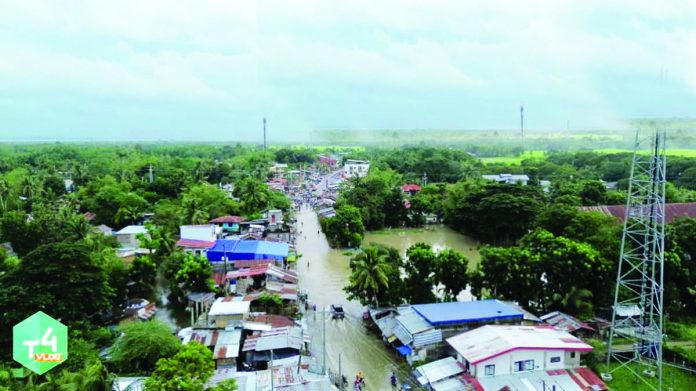
ILOILO – The towns of Oton and Pototan have been placed under a state of calamity due to massive flooding brought by the southwest monsoon or habagat enhanced by Typhoon “Goring.”
The Sangguniang Bayan (SB) of Oton led by Vice Mayor Jose Neil Olivares passed a resolution on this on Friday, Sept. 1.
The enhanced southwest monsoon affected more than 15 percent of the town’s total population. It displaced 850 families, or 3,537 individuals, from 23 out of 37 barangays.
“Yes, the LGU (local government unit) of Oton has declared a state of calamity due to the catastrophe brought by the Typhoon ‘Goring,’” Olivares told Panay News.
The Oton LGU also recorded P8,708,236 worth of damage to rice, high-value crops (P1,112,817), fisheries (P1,106,500), and livestock (P1,388,650), affecting more than 500 farmers.
Olivares said this was the second time that several Oton barangays experienced waist-deep flood since 1994.
“Second highest maybe, second highest sa 1994 floods nga amo ang pinakadalom nga baha, taga-hawak kag taga-liog ang tubig,” the vice mayor added.
Barangays Poblacion and Alegre were the first to be inundated on Aug. 29 following heavy rains.
As of this writing, the Oton LGU was preparing programs or interventions to aid the affected farmers.
In Pototan, Mayor Rafael Enrique P. Lazaro called for an emergency meeting with the Municipal Disaster Risk Reduction and Management Council (MDRRMC) on Thursday to declare a state of calamity.
“May mga damage kami sa typhoon kay kadamo sang amon barangays ang ginbaha. Aside sina, may damage man kami sa infrastructures kag agriculture,” Lazaro told Panay News.
Nineteen out of 50 barangays experienced flooding, affecting more than 3,000 families, or 15,000 individuals, data from the Pototan MDRRMC showed.
The town also incurred almost P10 million losses in agriculture particularly in rice, corn and other high-value crops.
Lazaro added that infrastructure damage, particularly to around five-kilometer road, was pegged at around P6.5 million.
“Kon makahulag na ang amon fund kag sang iya sang barangay umpisahan naton ang pag-repair sang mga guba naton nga mga karsada,” the mayor said.
The municipal government, meanwhile, distributed family food packs, hygiene kits, and medicines to the affected residents.
Under the National Disaster Risk Reduction and Management Council’s (NDRRMC) Memorandum Order No. 60, series of 2018 and Republic Act 10121, or the Philippine Disaster Risk Reduction and Management Act of 2010, here are the criteria for the declaration of a state of calamity:
* at least 15 percent of the forecasted affected population based on science-based projections needs emergency assistance;
* at least 30 percent of the means of livelihood in the agricultural, business and industrial sectors are affected;
* damage to critical and lifeline infrastructure/facilities such as major roads and bridges, power stations, potable water supply systems, and telecommunication facilities;
* widespread destruction of fishponds, crops, poultry and livestock;
* disruption of lifelines such as food chains, electricity, potable water systems, other transport systems, communication systems, access to health service, and other related systems that cannot be restored within one week, or in the case of highly urbanized areas where restoration of the above lifelines cannot be done within twenty-four hours; and
* significant degradation of the environment and natural resources based on the recommendations of government agencies./PN





